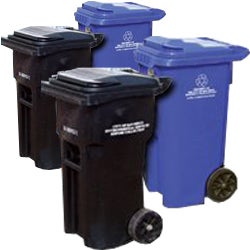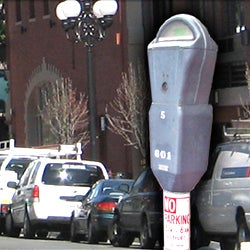Accessory and Junior Accessory Dwelling Units (ADU/JADU)
ADUs are detached or attached accessory structures on a residential lot that provide independent living areas. ADUs are intended as permanent housing solutions and shall not be used for rental terms of less than 31 consecutive days.
ADUs can be integrated into existing single-family or multi-family properties. They can be designed in various ways, including converting a portion of an existing house, adding to the existing house, converting an existing garage or constructing a new detached structure. Learn more about ADUs and JADUs.
Highlights
ADUs and JADUs are integral to the City's Housing SD initiatives to increase housing affordability and supply citywide. The City has amended regulations that make it easier and less expensive to build ADUs and JADUs, providing affordable and below-market housing throughout the City.
Some of these changes include:
- Digital plan review, expedited processing and construction inspection times.
- A property with a Single Dwelling Unit may have both an ADU and a JADU.
- A property with Multiple Dwelling Units may have two detached ADUs and may convert habitable and non-habitable spaces to ADUs.
- The maximum size is 1,200 square feet, attached or detached.
- Encroachments into the side and rear yards.
- No parking required: Replacement parking is not required for conversions of garages.
- Bonus ADU Program for Affordable ADUs.
- Rental terms are for a minimum of 31 days.
- Waiving Development Impact Fees, Facility Benefit Assessment Fees and General Plan Maintenance Fees.
- Accepting permit-ready, no-cost building plans from the County of San Diego and the City of Encinitas Permit-Ready Accessory Dwelling Unit (PRADU) program. The plans still must meet the City of San Diego submittal guidelines for a building permit.
Municipal Code
- Effective March 15, 2024, Amended ADU and JADU Regulations Outside Coastal Overlay Zone
Within the Coastal Overlay Zone, amendments will not apply until the California Coastal Commission certifies it as a Local Coastal Program Amendment. View the Strikeout Ordinance highlighting changes. - Building Permit Procedures
- Additions and Modifications to the California Codes
- California Building Code – Chapter 14, Article 5, Division 1 - 36
- California Residential Code – Chapter 14, Article 9, Division 1- 45
- California Green Building Standards Code – Chapter 14, Article 10, Division 1-6
- California Existing Building Code – Chapter 14, Article 11, Division 1 - 1
Fee Schedule
- Information Bulletin 501 – Construction Permits for Structures
- Information Bulletin 146 – School Fees
Inspections
- Information Bulletin 120 - Project Inspections
Publications and Resources
- ADU and JADU Map: Conduct searches for ADUs and JADUs in the City of San Diego by location, time frame and application status.
- California Department of Housing and Urban Development ADU Handbook
- City of San Diego ADU Fact Sheet
- Information Bulletin 101 - Building Valuation
- Information Bulletin 117 - Building Permit Extension and Expiration
- Information Bulletin 118 - Construction Changes
- Information Bulletin 140 - Residential Addition/Remodel
- Information Bulletin 152 - Building Permit Submittal
- Information Bulletin 153 - Building Permit Issuance
- Information Bulletin 242 - How to Obtain a Permit to Legalize Unpermitted ADUs
- Information Bulletin 400 - ADU/Junior ADU
- Technical Bulletin RESD-3-4 - Sprinkler Requirements for ADUs
- Permit-ready design/building plans:
- City of Encinitas Permit-Ready Accessory Dwelling Unit (PRADU) program*
- County of San Diego*
*Contact each jurisdiction for the latest version of their plans. Once customized for your application, they must be submitted in PDF format. View PDF requirements.
FAQ - Affordable ADU Bonus Program
What is the ADU Bonus Program?
The City’s “Affordable ADU Bonus” program was created in response to AB 671, which mandates local jurisdictions to incentivize the construction of affordable ADUs. The Affordable ADU bonus program allows for constructing one unrestricted ADU for every affordable ADU deed-restricted for 10 years or 15 years, depending on the affordable income level.
How many bonus ADUs are permitted outside of a Sustainable Development Area?
Outside Sustainable Development Areas, projects are limited to one more unrestricted ADU.
How many bonus ADUs are permitted inside of a Sustainable Development Area?
The number of additional ADUs within SDAs does not have a specific limit. In all instances, the number of bonus ADUs would be physically limited by zoning regulations such as:
- maximum allowable floor area ratio.
- lot coverage.
- structure height requirements.
This means that aside from setbacks, the ultimate building mass allowed would be no different than what a single dwelling unit or multi-family structure could build on the lot, depending on whether the ADU is located in a single-family or multi-family zone. The primary difference is the number of housing units provided.
- As part of O-21618, a pipeline provision was adopted, allowing projects that have submitted applications one year from the effective date of the Ordinance (May 6, 2023) to be subject to the rules in effect prior to the effective date of the Ordinance.
- Project applications submitted on or before May 5, 2024, may utilize the bonus ADU provisions on properties that are within a Transit Priority Area but outside of a Sustainable Development Area.
What is the process to restrict the ADUs as affordable?
A written agreement and a deed of trust is required between the applicant and the San Diego Housing Commission, which is established as part of the ADU permit review and approval process.
How long must the ADUs be income-restricted?
- For ADUs restricted to very low-income and low-income households, the restriction shall apply for a period of not less than 10 years.
- For ADUs restricted to moderate-income households, the restriction shall apply for a period of not less than 15 years.
What is the current (2023) area median income (AMI) for San Diego?
- The current AMI for a family of four is $116,800
- San Diego Housing Commission Income limits chart: https://sdhc.org/wp-content/uploads/2023/AMIIncomeLimits-2023.pdf
- San Diego Housing Commission Income and Rent calculations spreadsheet: https://sdhc.org/wp-content/uploads/2023/AMIIncomeRentChart-2023.pdf
Is there a bonus program for JADUs?
No. Only one JADU is permitted on a premises in the Single-Dwelling Unit Zone. JADUs are not permitted in Multiple Dwelling Unit Zones.
FAQ - Single Dwelling Unit Zones Outside of the Coastal Overlay Zone
Can I build a new detached JADU?
No, a JADU must be within the envelope of an existing Single Primary Dwelling Unit, within a proposed Single Primary Dwelling Unit or within an attached garage.
Can I have an access door between my JADU and my primary dwelling unit?
Yes, but the JADU must also have a separate exterior entry.
Am I required to provide a kitchen in my ADU or JADU?
No. However, if the construction of an ADU or JADU involves the conversion or demolition of an existing covered parking structure and the existing driveway curb does not conform with current city standards, the driveway shall be closed to the satisfaction of the City Engineer.
Yes. However, if you exceed the maximum FAR of the zone, you are limited to one (1) ADU with a maximum gross floor area of 800 square feet.
Can I use my existing driveway as a parking space?
Yes. The parking spaces must meet minimum dimension standards. 9’ x 18’ for parking spaces with a wall or column on one side. 9’-6” x 18’ for parking spaces with a wall or column on two sides. 8’ x 18’ for all others.
Yes. As addressed in §141.0302(b)(3)(E), if the construction of an ADU or JADU causes an existing driveway curb cut to no longer comply with the dimensions required in Table 142-05K of §142.0560 for an off-street parking space, the driveway shall be closed to the satisfaction of the City Engineer.
Yes. However, no additional floor area can encroach into the front and/or street-side setbacks.
Yes. These proposed encroachments should be in conformance with §131.0461 of the San Diego Municipal Code.
The regulations allow for the following:
- • Two detached ADUs.
- • The conversion of 25% of the existing previously permitted multiple dwelling units.
- • Unlimited ADUs when converting non-habitable areas of an existing multiple dwelling unit building.
FAQ - Multiple Dwelling Unit Zones Outside of the Coastal Overlay Zone
I am in a zone that allows residential and commercial uses. Can I build an ADU?
Yes. However, there must be at least one existing or proposed primary dwelling unit.
No, at least one existing or proposed primary dwelling unit must exist.
Am I required to provide a kitchen in my ADU?
I am at the floor area ratio maximum for my zone. What is the largest new ADU I can build?
1 detached ADU with 800 square feet of new gross floor area. Exterior wall thickness is included in the gross floor area. See SDMC §113.0234 Calculating Gross Floor Area.























